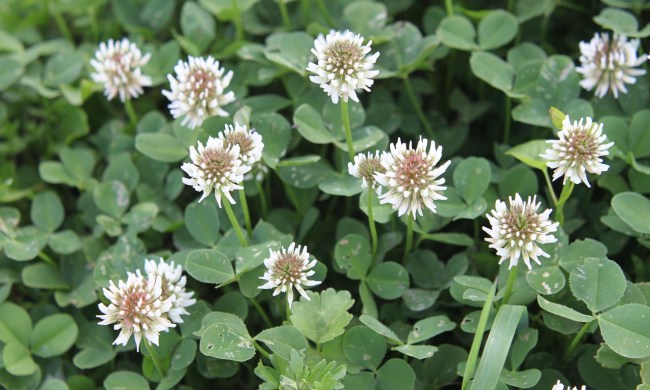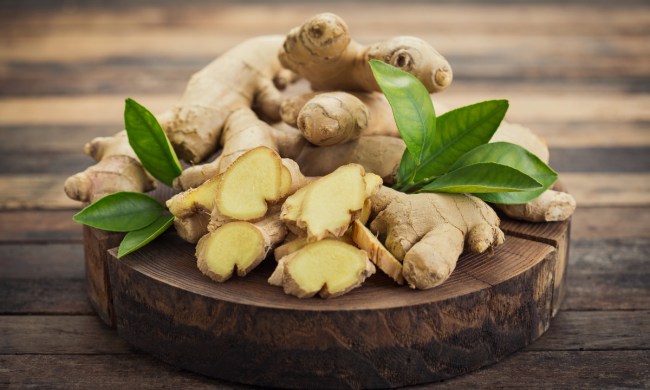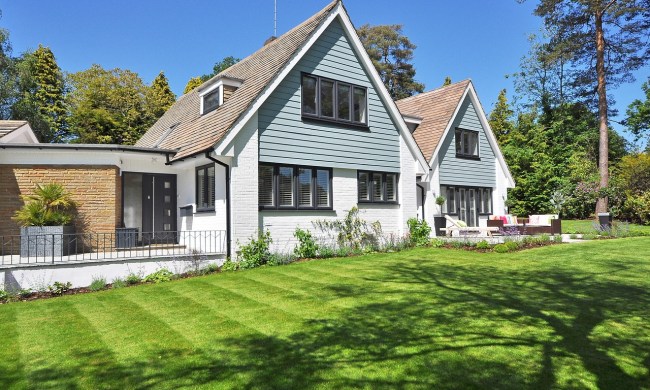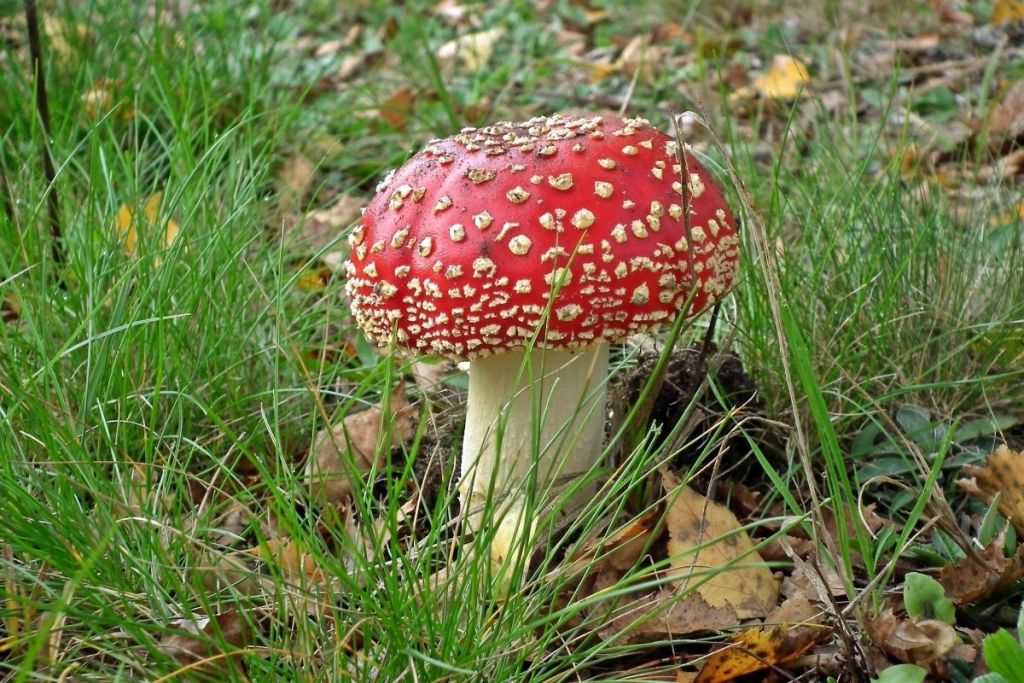
Mushrooms are good on pizza but not on lawns. Anyone who appreciates a well-groomed lawn, and works hard to keep theirs in tip-top shape, generally hates the sight of mushrooms. Mushrooms may seem to pop up randomly, any time of year, regardless of the lawn’s good health. So, what’s the deal? If your lawn is plagued with mushrooms and you’re ready to make a change, keep reading. We’ll take a look at what they are, why they may be taking over your yard, and what you can do to control them.
What are mushrooms?
Mushrooms are the fruiting bodies of certain types of fungi. Most of those found in lawns are classified as “saprophytic,” meaning they colonize and extract nutrients from dead organic matter, at the surface or deep below. When the fungus has fed adequately, and environmental conditions are just right, they produce mushrooms, which emit airborne spores to colonize new areas. The fungus continues to feed and fruit in cycles until the available nutrients have been depleted.
Unlike the microscopic fungi that cause root rot, leaf spots, and other plant diseases, these are mostly harmless to the grass itself. In fact they are soil builders that play an important role in nutrient cycling, which is good for the lawn. The presence of mushrooms is often just an eyesore, but they may be an indication of other problems like thatch buildup, excessive watering, or a dying tree nearby.
How to know if you have a mushroom problem
The appearance of a mushroom, or dozens of them, after a rain event is not an automatic cause for concern. Many of the small, thin types will disappear after a few hours in the sun. Larger, fleshy types can safely be removed by hand and composted or discarded.
Then again, there are truly problematic situations. Some large-growing types can exert enough pressure as they grow to push pavement slabs out of place, other prolific clustering types could smother garden seedlings, and some produce stinky smells or poisonous metabolites. When this is the case, you may wish to take action to control them.
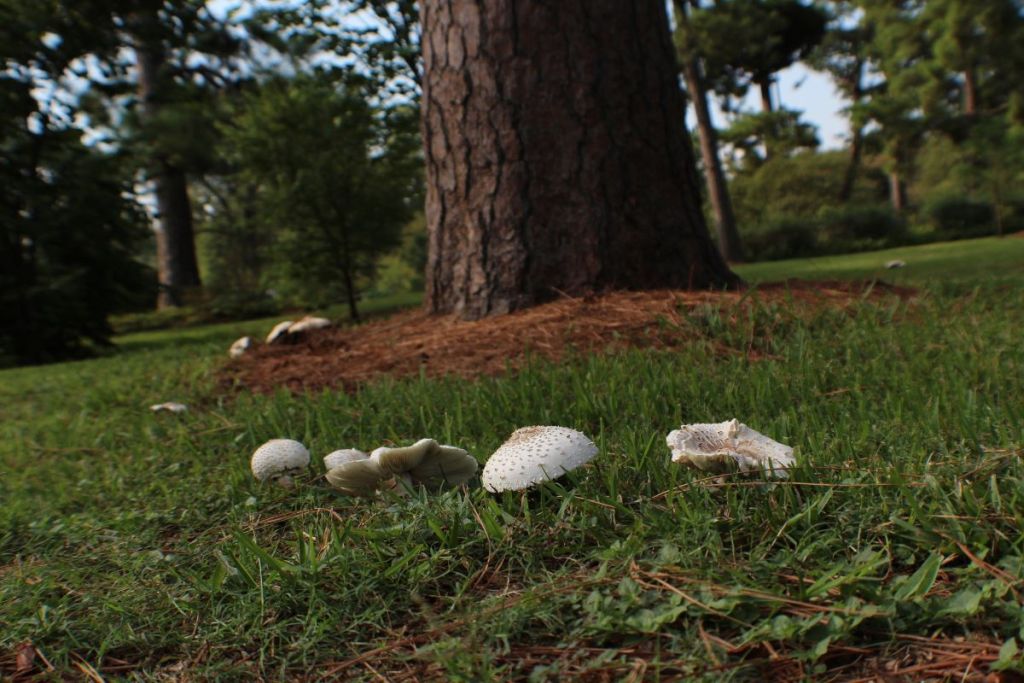
7 ways to get rid of mushrooms in the lawn
Chemical controls are not available for lawn mushrooms. Where recurrent problems occur, physical control is necessary to reduce the conditions that favor the invaders. The good news is that these mushroom control methods are also great for the grass.
Control moisture
Mushrooms favor wet weather. If you use a lawn sprinkler, use a rain sensor and moisture meter to discontinue watering as long as the soil is wet after rain.
Aerate the lawn
Soil compaction also promotes fungal growth. Increasing oxygen to the grass root zone will increase the prevalence of worms and other creatures that feed on mycelium.
Remove thatch
Dead organic matter, including lawn thatch, provides a moist safe haven and food source for mushrooms. Removing thatch is good for the grass and bad for fungi.
Let in more sunlight
Bright sunlight makes it difficult for shade-loving mushrooms to grow. Prune low branches on adjacent trees to light up shady, mushroom-prone lawn areas.
Remove the food source
Old tree stumps, dead tree roots, and pet waste provide nutrient sources for mushroom fungi to thrive. Grind old stumps and remove any pieces of dead wood or tree roots. Be diligent about cleaning up pet waste. Sometimes removing the top few inches of soil in the area will help.
Break up mycelium
If fungal growth is preventing water absorption, break it up with a garden fork or hoe.
Remove mushrooms before they open
Allowing mushrooms to mature and spread spores is like letting weeds go to seed. Diligently remove them whenever they appear, ideally before the caps open.
Mushrooms may signify danger
When mushrooms grow at the base of a tree, or appear to radiate from its base, the tree may be dying. Even if the upper parts of the tree appear to be in good health, mushrooms are often a telltale sign that the root structure has become weak. When this happens, large trees are susceptible to blowdown. In fact, anywhere mushrooms grow directly on a tree could become a breakpoint. Consider this a possible warning sign and call a certified arborist to diagnose and treat the issue or remove the tree.
Keep all of this in mind when deciding whether or not mushrooms in your lawn are a problem you need to address. They’re not always an issue, but it’s always worth keeping an eye out and, when necessary, doing what you can to keep them from spreading.

